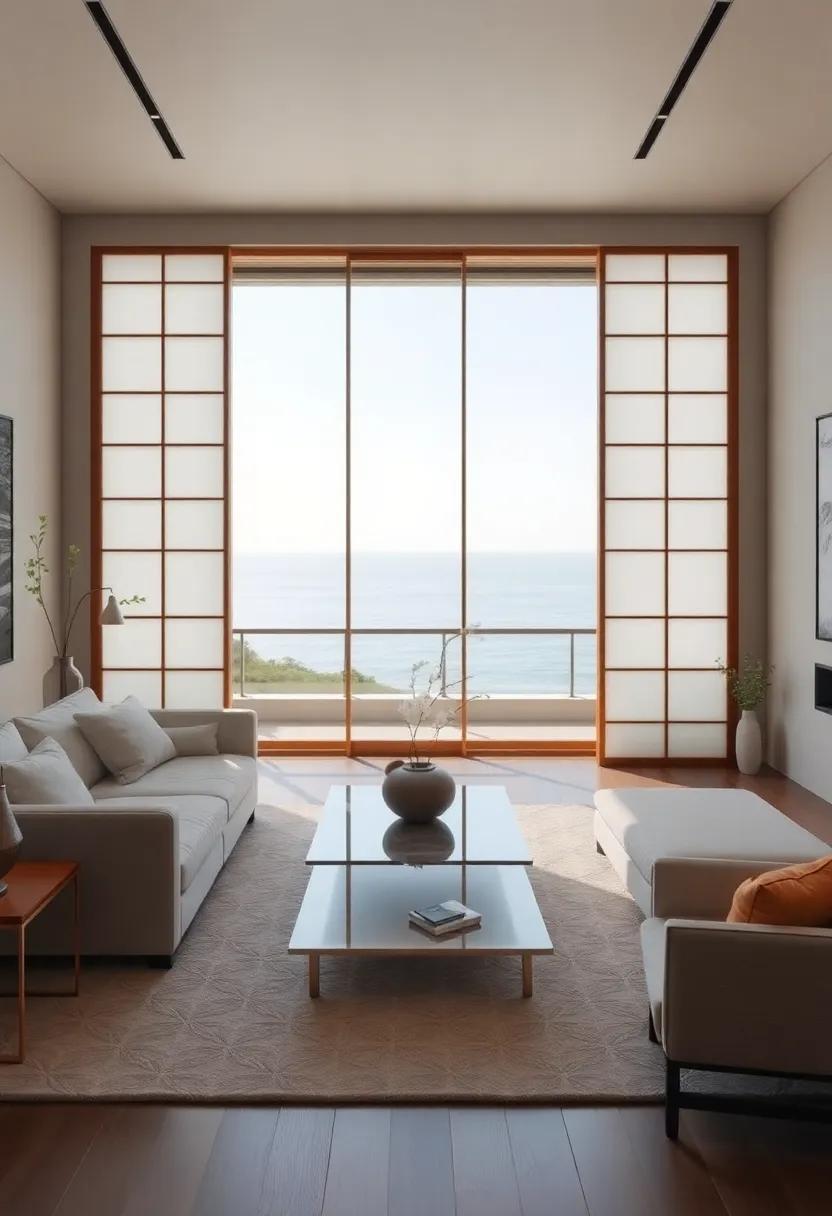In a world where design trends often shift as rapidly as the seasons, the enduring elegance of Japanese Shoji screens offers a serene oasis amidst the chaos. These exquisite partitions, traditionally used in Japanese architecture, are not merely functional; they embody a philosophy of minimalism and harmony that resonates deeply with contemporary aesthetics. As we seek to infuse our living spaces with character and tranquility, the adoption of Shoji screens presents an possibility to blend the timeless artistry of the East with the sleek sensibilities of modern design. In this article, we will explore how these versatile screens can transform your living room, turning it into a tranquil retreat that balances openness and privacy, light and shadow, while honoring an age-old tradition that enhances the beauty of everyday life. Join us as we delve into the elegance of shoji screens and discover how they can elevate your contemporary space to new heights of sophistication.
Transforming Your living Space with Timeless Japanese Aesthetics
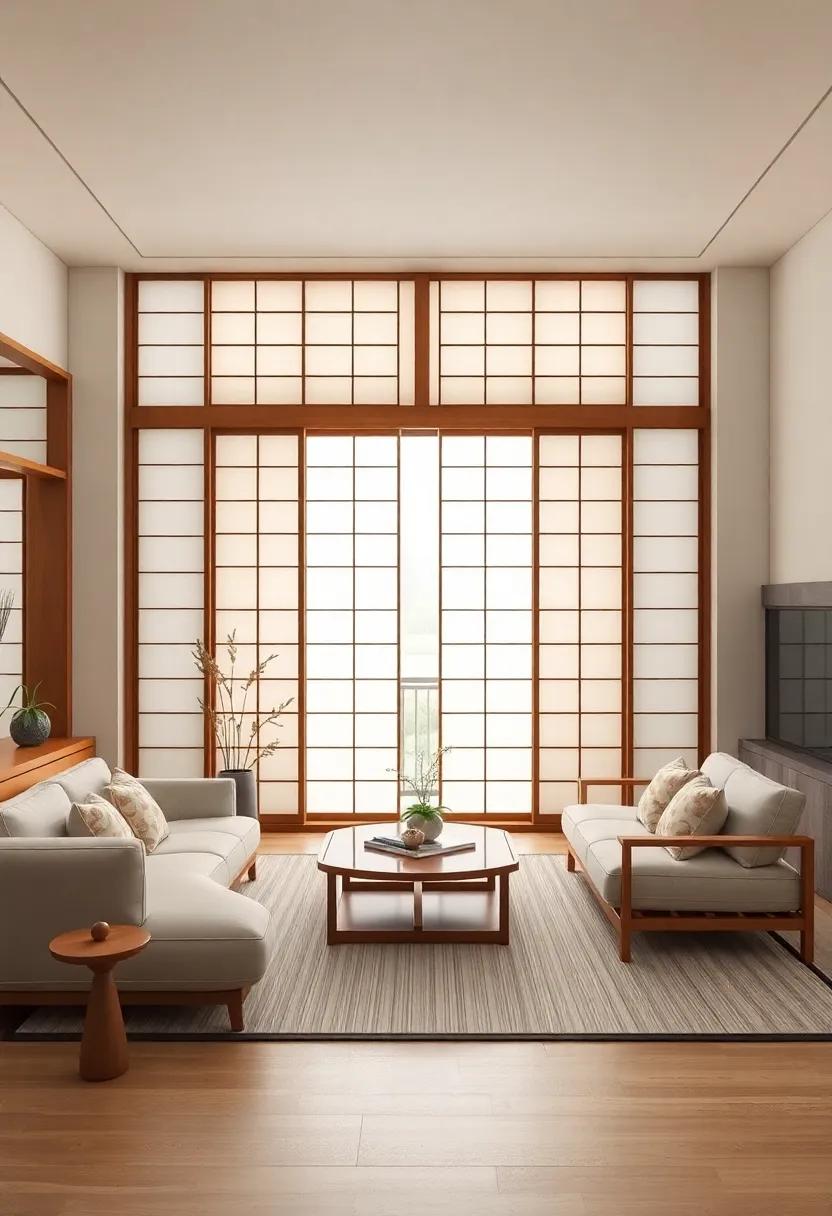
Incorporating shoji screens into your living room offers a seamless blend of functionality and artistic elegance. These conventional Japanese dividers, crafted from lightweight wood frameworks and translucent rice paper, not only provide privacy but also allow natural light to filter through, creating a soothing ambiance. Consider using Shoji screens to define spaces without restricting flow,effectively delineating areas for relaxation,work,or entertainment. Their versatility allows them to serve as backdrops for your furniture while adding a layer of cultural richness to your decor.
For a contemporary touch, pair Shoji screens with modern furnishings and color palettes. Incorporating elements such as minimalist furniture, subtle patterns, and natural materials can enhance the overall aesthetic. To inspire your design choices, here’s a table showcasing the harmonious elements that work beautifully with Shoji screens:
| Element | Description |
|---|---|
| Natural Textures | Introduce materials like wood, bamboo, or stone to emphasize organic beauty. |
| Earthy Tones | Utilize muted greens, browns, and beiges for a calming atmosphere. |
| subdued Lighting | Opt for warm, dimmable lights to complement the soft glow of Shoji screens. |
| Simple Patterns | Select decor with understated designs that echo the elegance of Shoji. |
The Art of Minimalism Embracing the Essence of Japanese Design
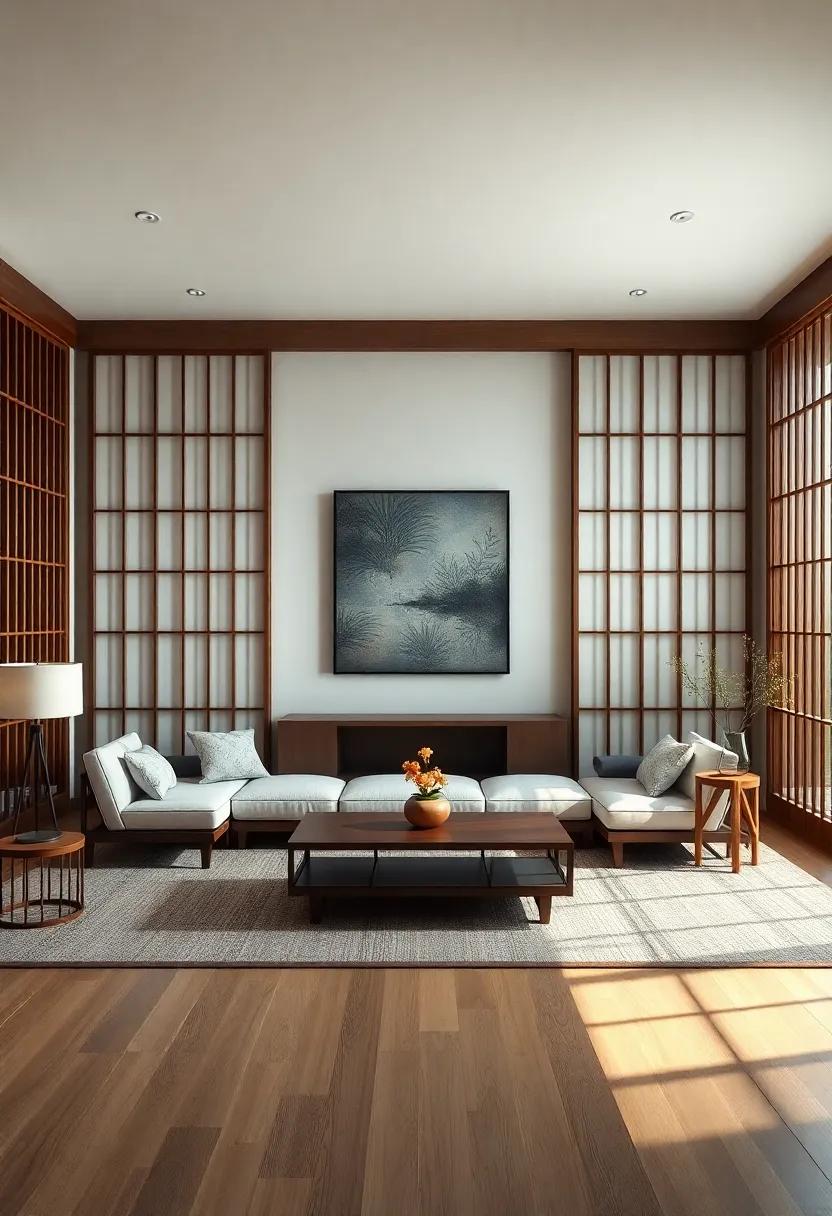
In the heart of Japanese design lies a profound recognition for simplicity and functionality. By incorporating shoji screens into your living room, you not only enhance the aesthetic quality of your space but also embrace a lifestyle that champions minimalism. The delicate openness of the rice paper allows light to dance across the room, creating a serene ambiance that fosters relaxation. As you transition between spaces, the sliding nature of these partitions enables a fluidity that mirrors the calmness of traditional Japanese homes, encouraging a seamless connection with your surroundings.
Utilizing shoji screens goes beyond visual appeal; it also offers practical benefits. They can serve as decorative dividers, creating intimate corners for reading or meditation within a larger area. Consider the following aspects when integrating shoji screens into your living space:
- Material Selection: Choose durable, yet lightweight options that complement your existing decor.
- Color Palette: Stick to neutral tones to maintain a cohesive look, allowing the natural beauty of the materials to shine.
- Placement: Position screens to maximize natural light while providing necessary privacy.
Incorporating Natural Light Joy of Shoji Screens in Modern Interiors

Embracing the soft, ethereal glow of natural light is essential in modern interior design, and Shoji screens beautifully facilitate this by offering a harmonious blend of accessibility and privacy. These traditional Japanese sliding doors, crafted from a delicate wooden frame and translucent paper, diffuse sunlight, creating a calming atmosphere that enhances the aesthetic of any contemporary living space. By strategically placing them as room dividers or in front of windows, homeowners can enjoy the transformative effect of gentle light filtering through, imbuing the room with a warm, inviting ambiance.
Moreover, the versatility of Shoji screens extends beyond their functional purposes. With a variety of designs and finishes available, you can incorporate them into your décor to reflect your personal style. Consider the following elements when integrating Shoji screens into your home:
- Texture: Choose screens with unique patterns for visual interest.
- Color Palette: Opt for natural wood finishes that complement your existing furniture.
- Functionality: Use them to create private nooks or to separate dining and living areas.
Creating Seamless Transitions Blending Indoor and Outdoor Spaces

Incorporating Japanese shoji screens into your living room not only enhances aesthetic appeal but also creates fluid boundaries between indoor and outdoor environments. The traditional paper sliding doors serve as a unique architectural feature, allowing you to open up your space to nature while maintaining a sense of intimacy. Natural light filters through the translucent screens, casting intricate shadows and imbuing your space with a warm, inviting glow. This elegant division encourages a harmonious connection with the outdoors,making it easy to enjoy the sights and sounds of nature from the comfort of your home.
To further the seamless blend between your indoor and outdoor areas, consider the following elements when integrating shoji screens:
- Materials: Opt for natural woods and traditional rice paper to reflect authenticity.
- Color Palette: Use muted tones in furnishings that echo the natural hues of your garden.
- Furniture Arrangement: Position your seating to face these screens, enhancing views of the exterior.
Additionally, you can create a simple, effective contrast by placing foliage on either side of the shoji screens, enriching the view and promoting a tranquil atmosphere. Consider employing minimalistic decor to maintain an uncluttered feel that complements the serene nature of the shoji screens and the landscapes outside.
Functional Elegance A Dual Purpose of Shoji as Room Dividers
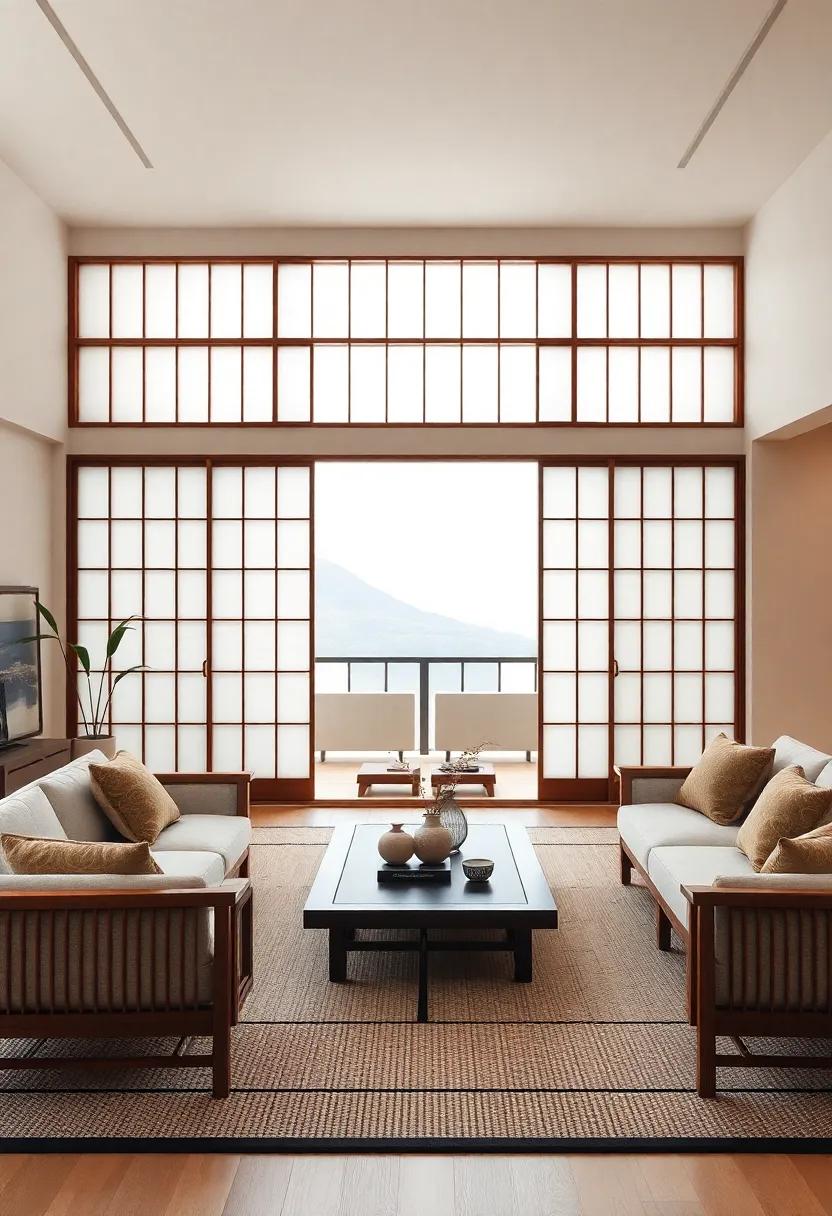
In the quest for a harmonious living space, the integration of traditional elements can create an atmosphere of refined sophistication.Japanese Shoji screens stand out not only for their aesthetic charm but for their remarkable versatility. Crafted from lightweight wooden frames, they often feature translucent rice paper, allowing light to filter through while providing just enough privacy. This dual functionality makes them ideal as room dividers; they can partition a larger area into cozy nooks without entirely blocking the flow of light. Such adaptability is particularly beneficial in modern homes where open plan designs dominate.
incorporating Shoji screens as decorative dividers brings forth an effortless blend of style and practicality. They can function as temporary barriers during gatherings, creating designated spaces for conversation or relaxation, while also being easily retracted when not in use. The natural materials promote a sense of tranquility, aligning beautifully with minimalist aesthetics. Some features to consider include:
- Lightweight Design: Easy to reposition as needed.
- Varied patterns: Choose from a range of designs to complement your decor.
- Sustainability: Manny Shoji screens are made from eco-friendly materials.
Textures and Patterns Exploring the Unique Craftsmanship of Shoji
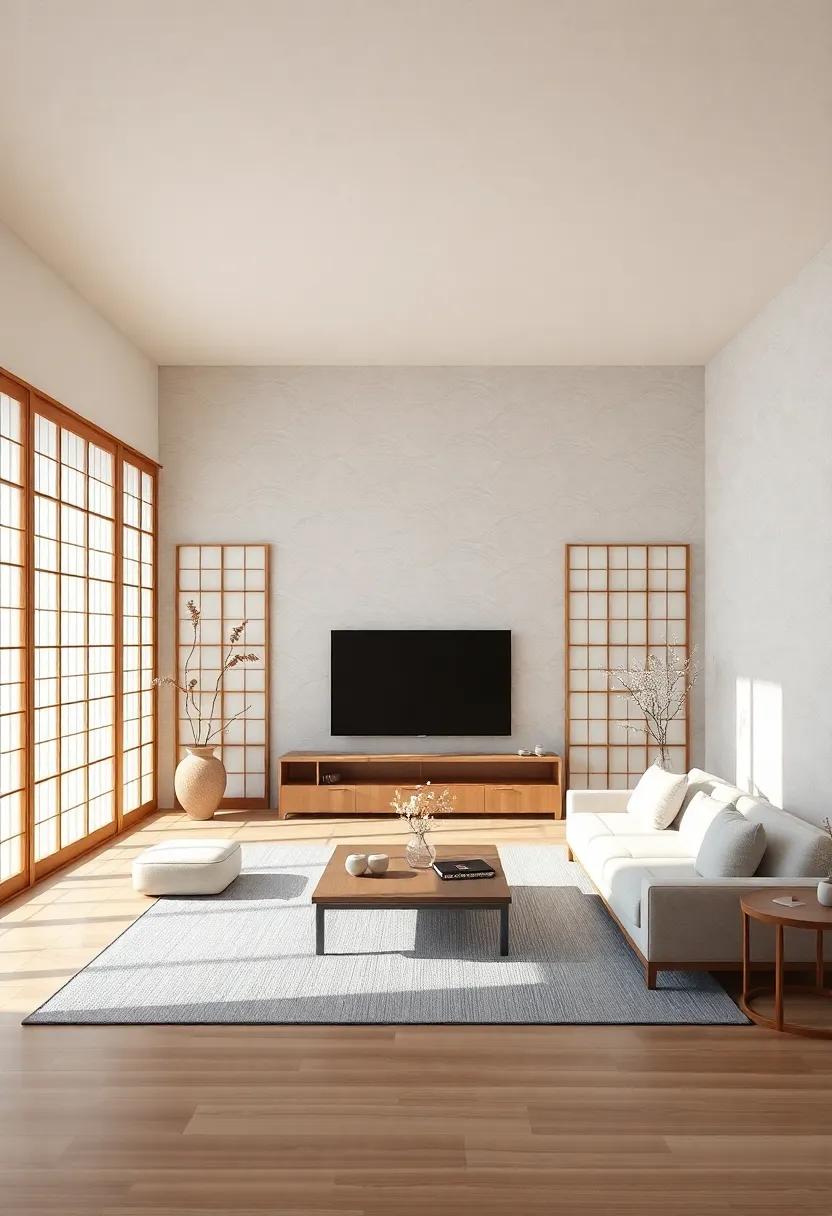
The delicate craftsmanship of Shoji screens is celebrated not only for their functional beauty but also for the intricate textures and patterns that adorn them. Traditional Shoji screens typically feature a framework of fine wood, clad with washi paper, which lends a soft, diffused light into living spaces.The interplay of light and shadow creates a serene atmosphere, while the unique patterns frequently enough found in Shoji can embody various themes—from natural motifs of bamboo and cherry blossoms to geometric designs. Each screen tells a story, offering a glimpse into the meticulous artistry and cultural heritage of Japanese craftsmanship.
In contemporary spaces, these versatile elements can be appreciated in various forms, from minimalistic designs to more elaborate statements. The tactile qualities of Shoji are enhanced by techniques such as hand-painting or the application of pressed flowers, which not only draw the eye but also invite touch. Homeowners can choose from an assortment of styles, including:
- Classic: Timeless designs with natural wood finishes and soft, neutral paper.
- Modern: Sleek frames with bold colors or abstract patterns that make a statement.
- Custom:** Tailored Shoji that can incorporate individual artwork or personal touches.
Culture in Design Celebrating the Heritage of Japanese Shoji Screens
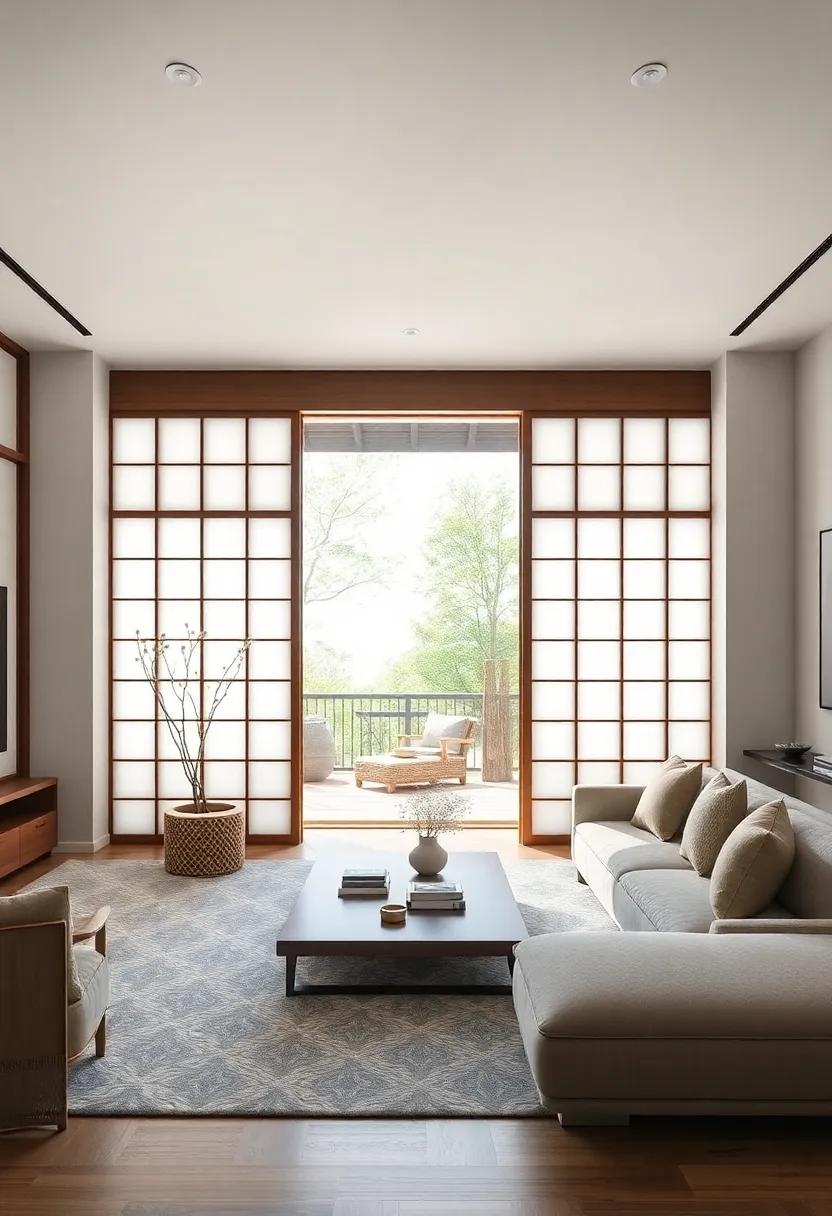
Japanese shoji screens are not merely functional pieces of architecture; they embody a harmonious blend of art and utility, reflecting centuries of cultural craftsmanship. The delicate balance of light and shadow that shoji screens create enriches a room’s atmosphere, allowing natural light to filter through while maintaining a sense of privacy. Traditionally crafted with a wooden frame and covered with translucent rice paper, these screens can transform any space by offering a seamless connection between indoor and outdoor environments. Their minimalist aesthetic aligns perfectly with contemporary design principles, helping to create an inviting and serene living area.
The beauty of shoji screens lies in their versatility and symbolic importance. By integrating these artisan pieces into your living room, you are not just adding decor; you are celebrating the essence of Japanese culture. Consider the following benefits when choosing shoji screens for your home:
- Space Dividers: they effectively create distinct zones within open spaces without sacrificing openness.
- natural Materials: Made from sustainable resources,they contribute to eco-friendly interior design.
- Customizable Designs: Available in various patterns and sizes, ensuring that they can match any design aesthetic.
Embracing shoji screens is a step towards merging cultural heritage with modern living, resulting in a beautifully curated space that tells a story.
Color schemes Inspired by Nature Harmonizing with Earthy Tones

Embracing the serene palette of the natural world can transform your living space into a sanctuary of calm. When harmonizing with earthy tones, consider using colors that reflect the subtle variations found in nature. Shades of soft greens,muted browns,and warm greys can evoke the feeling of being outdoors,bringing an organic touch to your living room. Using these colors in combination with natural materials, such as wood and stone, creates a cohesive ambiance that invites relaxation and mindfulness.
To further enhance this tranquil atmosphere, you can incorporate elements that mimic natural textures. Consider layering fabrics that resemble the gentle patterns found in fabrics such as linen, cotton, or wool in the following tones:
| Color | Description |
|---|---|
| Forest Green | Rich and deep, reminiscent of lush canopies. |
| Clay Brown | Warm and grounding,reflecting earthen landscapes. |
| Dune Beige | Soft and airy, echoing sunlit beaches. |
These tones not only pair beautifully with shoji screens but also open up the space, allowing for a harmonious flow that embodies simplicity and elegance. By integrating these color schemes in your decor—be it through wall paint, accessories, or furniture—you can create a living room that resonates with the tranquility and beauty of the natural environment.
Versatile Applications using Shoji Screens in various Room Styles
Japanese Shoji screens offer a unique blend of functionality and aesthetic appeal that transcends traditional boundaries. They can be utilized in various room styles, enhancing aesthetics while serving practical purposes. In a contemporary living room, for example, Shoji screens can act as dividers to create more intimate spaces without sacrificing light. Their translucency allows natural light to filter through, creating a warm and inviting atmosphere. Additionally, they can serve as a striking artistic statement, showcasing intricate designs or simple lines that complement modern decor.
When considering the application of Shoji screens in different styles, the possibilities are endless. Here are some inspiring ways to incorporate them:
- Zen-inspired Spaces: Use Shoji screens to enhance tranquility, promoting a connection with nature and encouraging mindfulness.
- Minimalist Designs: In minimalist settings, they provide simplistically stunning barriers that maintain a sense of openness.
- Ethereal Bohemian: Combine vibrant textiles with Shoji screens to add layers of texture and color while keeping the space airy.
Inviting Serenity Cultivating Calmness through shoji Elements

Incorporating Shoji elements into your living space can dramatically enhance your overall sense of peace and tranquility. These traditional Japanese screens, renowned for their sliding panel design and translucent rice paper, serve not only as functional dividers but also as aesthetic enhancements that filter natural light. Their appearance is both delicate and robust, making them an ideal choice for contemporary decor. When integrated thoughtfully, Shoji screens can create defined spaces that invite calmness and encourage mindfulness in daily interactions.
To maximize the serene atmosphere that shoji screens provide, consider the following design tips:
- Color palette: Opt for soft, muted tones that complement natural wood finishes.
- Placement: Position screens to separate relaxation areas, such as a reading nook or meditation corner.
- Textures: Combine Shoji screens with plush textiles to enhance comfort and warmth.
- Lighting: Incorporate soft, diffused lighting to create a gentle ambiance that harmonizes with the screens.
The strategic use of Shoji screens not only refines your living room’s aesthetics but also plays a crucial role in managing space perception. Utilizing these elements can definitely help achieve a harmonious balance between openness and privacy, making your environment feel more spacious yet intimate. Embrace the simplicity and elegance of Shoji, turning your home into a sanctuary of serenity.
Personalizing Your Space Customization Options for Unique Shoji

When it comes to enhancing the ambiance of your living room, customizing shoji screens offers a wonderful opportunity to express your unique style. From choosing the right materials to selecting the perfect designs and colors, each element can be tailored to fit your personal aesthetic. Consider the following options to make your screens a true reflection of your taste:
- Material Selection: opt for traditional rice paper for a soft, diffused light or choose a translucent polyester for added durability.
- Frame Styles: Select from natural wood finishes, vibrant lacquers, or sleek modern metals to complement your decor.
- Print Customization: Personalize your screens with unique patterns, botanical prints, or abstract designs that will harmonize with your living room’s theme.
Additionally,the layout of your shoji screens can serve as a functional and artistic aspect of your space.Whether you prefer a folding panel screen for flexibility or a sliding door style for seamless integration, the choice can greatly impact the flow of the room. Use this simple table to guide your selection:
| Type | Description | Best For |
|---|---|---|
| folding panel | Versatile and easily movable, perfect for temporary setups. | Flexible Spaces |
| Sliding Door | Sleek integration into existing walls for a seamless look. | Permanent installations |
Ultimately, the customization options for shoji allow you to create not just a functional barrier, but a captivating piece of art that invites tranquility and sophistication into your living room.
Inspiring Room Layouts Innovative Designs Featuring Shoji Screens

Embrace the harmony of space and light by incorporating Shoji screens into your living room layout. these traditional Japanese room dividers are not only functional but also serve as stunning focal points. Their delicate wooden frames and translucent rice paper allow natural light to flow through while providing an elegant separation of areas. Picture a cozy reading nook nestled behind a beautifully crafted Shoji screen, or use them to create a semi-private space for meditation or working from home. The versatility of Shoji screens can help you achieve a seamless blend of style and practicality.
To further enhance your living space with these innovative designs, consider the following layout ideas:
- Open Concept with Zones: Use Shoji screens to define specific zones within an open floor plan, adding depth and intimacy.
- Backlit Panels: Install backlit Shoji screens to serve as an art piece, creating a warm and inviting atmosphere during the evening.
- Sliding Doors: Opt for Shoji screens as sliding doors to easily transition between rooms while maintaining a cohesive look.
| Design Element | Benefit |
|---|---|
| Natural Light Filtering | Adds warmth and brightness to your space |
| Space Flexibility | Allows for easy reconfiguration of your living area |
| Cultural Aesthetics | Brings a touch of Japanese elegance to modern interiors |
Emphasizing Vertical Space Shoji as an Architectural Statement
Vertical space is often underutilized in modern interior design, yet it holds unbelievable potential for transforming a living area. Incorporating Shoji screens as a central architectural feature can redefine how we perceive and interact with space. These exquisite wooden frames and translucent rice paper not only enhance the aesthetic of a room but also serve practical purposes, such as partitioning areas without compromising light flow. By drawing the eye upwards and accentuating tall walls, Shoji screens create an illusion of grandeur and bring a sense of harmony, reflective of traditional Japanese design principles. Their minimalist charm enhances verticality, making any room feel more expansive and airy.
moreover, the interplay of light and shadow cast by Shoji screens can add an artistic dimension to interior spaces. As natural light filters through the delicate paper, it transforms throughout the day, offering an ever-changing backdrop that elevates the ambiance. consider strategic placements of shoji screens to not only demarcate different zones within your living room but also to frame views of the outdoors, blurring the boundaries between interior and exterior environments. The timeless elegance of Shoji materials lends itself beautifully to various decor styles, making them a versatile choice for contemporary living that honors tradition while embracing modern functionality.
Creating Intimate Spaces The Warmth of Shoji in Cozy Nooks
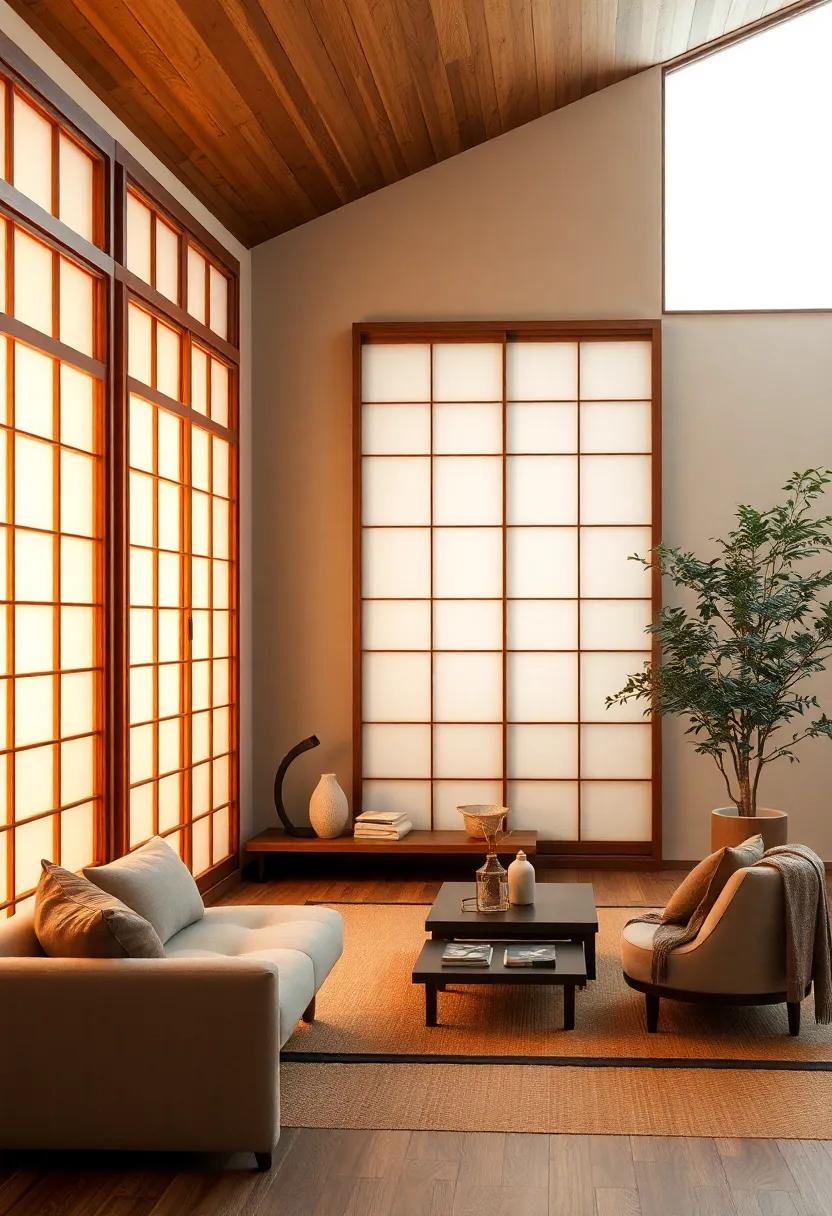
Embracing the unique aesthetic of Shoji screens can instantly elevate the softness and warmth of your living area. These stunning Japanese sliding panels, traditionally composed of a wooden frame with translucent paper, gracefully filter light and create a serene ambiance. Picture a cozy nook flanked by these elegant structures, where the soft glow of diffused sunlight captures the essence of tranquility. By positioning Shoji screens strategically, you can delineate spaces within a room, inviting a sense of intimacy without sacrificing openness.This delicate balance transforms everyday areas into cherished escapes, perfect for relaxation or quiet contemplation.
To enhance this atmosphere further, consider surrounding your Shoji screens with elements that resonate with their simplicity and grace. Incorporating natural materials such as bamboo, stone, or warm-toned woods can harmonize beautifully with the screens. The result is a cohesive design that exudes warmth and welcome. A few ideas to complement your Shoji-inspired nook include:
- Plush cushions in earthy tones
- Minimalist artwork that reflects nature
- Subtle indoor plants for an organic touch
| Element | Purpose |
|---|---|
| Natural Fabrics | Enhance comfort and warmth |
| Soft Lighting | Create a calming atmosphere |
| Artistic Accents | Add personal flair |
Enhancing Privacy with Style Elegant Solutions for Open Living Areas

In seeking to achieve a harmonious blend of privacy and aesthetic appeal within open living areas, Japanese Shoji screens present a refined solution that enhances both functionality and style. These elegant partitions are traditionally crafted from wood and paper, allowing soft light to filter through while maintaining a sense of transparency and openness. The delicate design of Shoji screens makes them an ideal choice for dividing spaces, defining areas for relaxation or work while preserving the fluidity of the overall environment. By incorporating these tasteful elements, homeowners can elevate their interiors with a balance of modern sophistication and timeless charm.
When considering the integration of Shoji screens, some key benefits include:
- Versatile Design: Available in various styles and finishes to complement any decor.
- Space Optimization: Seamlessly divides areas without the need for permanent walls.
- Natural Light: Allows for illumination while shielding against unwanted visibility.
- Easy to Install: Simple installation process can enhance creativity in interior layouts.
To further explore the use of Shoji screens in your living space,consider the following dimensions and material options:
| Material | Width (ft) | Height (ft) |
|---|---|---|
| Wood & Rice Paper | 3 | 6 |
| Eco-friendly Bamboo | 4 | 7 |
| Frosted Glass | 5 | 8 |
Sustainable Choices Eco-Friendly Materials in Shoji Screen Production
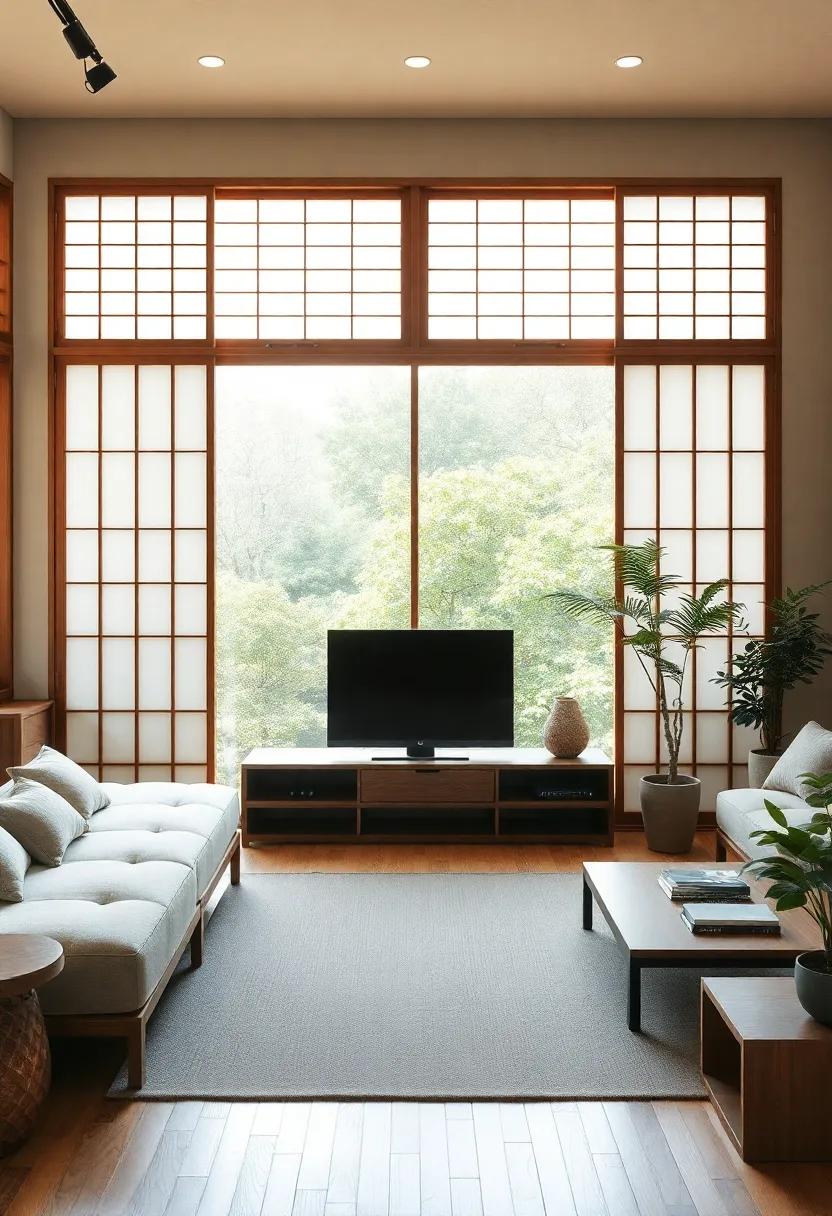
In the quest for harmonious living spaces, choosing materials that reflect sustainability is paramount. Shoji screens, with their minimalistic beauty, can be constructed using a variety of eco-friendly materials that not only elevate the aesthetic of a room but also promote environmental responsibility. Some common sustainable choices include:
- Bamboo: Fast-growing and renewable, bamboo’s natural strength makes it an excellent choice for the sturdy framework of Shoji screens.
- Recycled Wood: Utilizing reclaimed wood not only adds character and warmth but also reduces the demand for new timber, helping preserve forests.
- Rice Paper: Traditionally used in Shoji screens, this biodegradable material is a renewable resource that enhances the delicate translucence of the screens.
Integrating these materials into your living space not only supports sustainable practices but also adds a touch of authenticity to your decor. The manufacturing process of eco-friendly Shoji screens often emphasizes herbal and natural finishes, minimizing the use of synthetic chemicals and toxic adhesives. To illustrate the environmental impact of traditional versus eco-friendly materials,consider the following:
| Material Type | Eco-Friendly Option | Environmental Impact |
|---|---|---|
| Wood | Reclaimed wood/Bamboo | Reduces deforestation,encourages biodiversity |
| Paper | Rice Paper | Biodegradable and renewable source |
| Finishes | Natural Oils | Non-toxic and safe for indoor air quality |
Complementing Modern Decor Shoji Screens in Contemporary Environments

In contemporary environments, the integration of Shoji screens can create a harmonious balance between tradition and modern aesthetics. Their delicate frames and translucent paper offer a unique ability to soften harsh lines and stark contrasts often found in modern design. By incorporating Shoji screens, spaces can achieve a sense of calm and serenity, melding seamlessly with minimalist furniture and neutral color palettes. Imagine a spacious living room where a Shoji screen elegantly partitions the area, creating an intimate nook for relaxation, while still maintaining an open and airy feel throughout the space.
Furthermore, the versatility of Shoji screens allows for creative expression in various ways. They can serve not only as functional room dividers but also as artistic statements, featuring intricate designs or stunning patterns that can capture attention without overwhelming the room’s decor. Here are a few ways to enhance your living space with Shoji screens:
- Strategic Placement: Position them to frame a view or divide a space without closing it off.
- Layering Textures: Combine screens with natural materials like wood, stone, or plants for a cohesive look.
- Color schemes: Choose screens that complement the existing color palette to maintain a sense of unity.
- Lighting Effects: Use backlighting to enhance the screens’ texture and create lovely light patterns in the room.
Cultural Elements Infusing Traditional Japanese Hospitality into Your Home
To bring the essence of Japanese hospitality into your living space, consider incorporating shoji screens, which have long been celebrated for their elegance and simplicity. These versatile panels are not just room dividers; they serve to create a serene atmosphere that encourages harmony and mindfulness. By filtering natural light, shoji screens can transform your living room into a calming oasis, reminiscent of traditional Japanese homes. imagine inviting soft, diffused sunlight to dance across your space, highlighting minimalist furniture and carefully curated decor. In this way, shoji screens embody the core values of Japanese aesthetics, emphasizing balance and tranquility.
Moreover, the use of natural materials is pivotal in achieving an authentic Japanese-inspired environment. Shoji screens typically feature a wooden frame paired with rice paper, ensuring that every component resonates with nature. To elevate the cultural infusion even further, consider accentuating your screens with accessories that reflect Japanese craftsmanship. A curated selection could include:
- Ceramic teapots for a touch of elegance
- Woven tatami mats for added texture
- Ikebana arrangements to celebrate the art of flower arranging
By carefully selecting complementary elements, you can create a cohesive design that invites the warmth of Japanese aesthetics into your everyday life.
Closing Remarks
In an era where our living spaces serve as both sanctuaries and reflections of our personal style, the introduction of Japanese shoji screens opens up a world of transformative potential. these timeless elements invite a sense of serenity while seamlessly blending traditional artistry with modern aesthetics. Whether you seek to redefine boundaries within your home or create a peaceful oasis amidst the chaos of daily life, the elegance of shoji screens offers a versatile solution that transcends mere functionality. As you consider the possibilities of incorporating these beautiful designs into your living room, remember that every screen tells a story—a narrative of culture, craftsmanship, and calm. Embrace the harmony that shoji screens can bring, and embark on your own journey of change, one panel at a time.
As an Amazon Associate I earn from qualifying purchases.
